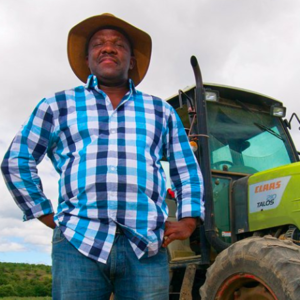In last week’s South Carolina debate, Democratic presidential candidates missed a prime opportunity to address “future of work” challenges facing black rural Southern voters.
The closest they came was former candidate Sen. Amy Klobuchar’s passing reference to rural poverty (without mentioning race) and a need for more home healthcare workers, and Mayor Pete Buttigieg’s brief comment about the need to expand healthcare access for black rural families.
This isn’t surprising. The rural economic plans for many candidates don’t even mention black people, including those of Joe Biden and Mike Bloomberg.
While the plans of Bernie Sanders and Elizabeth Warren acknowledge black rural land loss and systematic discrimination against black farmers, agriculture alone is not the entire solution because the industry is largely automated and accounts for only 6 percent of jobs in the “Black Rural South” and 2 percent of jobs in rural areas outside of the South.
My organization — the Joint Center for Political and Economic Studies — examined the future of work in the 156 U.S. Southern rural counties (including 13 South Carolina counties) with populations that were at least 35 percent black. We found a unique mix of racial inequality, inadequate infrastructure and job loss that warrant presidential attention.
While the Black Rural South has much higher unemployment rates and poverty rates and lower earnings than most of the nation (including rural areas outside the South), much of this stems from racial inequality. For example, 19 percent of white children live in poverty in the Black Rural South, compared to 52 percent of black children.
Indeed, whites seem to do better in the Black Rural South than whites in rural areas with few African-Americans. On average, whites living in the Black Rural South enjoy lower unemployment rates and lower poverty rates than whites who live in Southern rural counties that are over 90 percent white.
Presidential candidates rightly point out that the lack of broadband hinders rural entrepreneurship, education, training and remote work — but they don’t prioritize the region with the greatest need — the Black Rural South.
According to American Community Survey data, outside of the South 22 percent of all rural residents lack home broadband. In the Black Rural South, 28 percent of whites and 46 percent of African Americans lack home broadband.
The general “one-size-fits-all” rural economic plans of most presidential candidates also do not account for the extreme job loss that plagues the Black Rural South. Between 2001-2017, for example, the Black Rural South lost almost 40 percent of its manufacturing jobs — more than twice as high as the loss in rural counties outside the South.
Absent policy interventions, similar trends are projected for the future.
McKinsey & Company data predicts job growth between 2017-2030 to be 17 percent in “high-growth hubs” like Seattle, 8 percent in “stable cities” like Indianapolis, and 1 percent for healthier rural areas. During the same period, the Black Rural South could lose 9 percent of its jobs.
Presidential candidates have stumbled over the issue of reparations, even though slavery and Jim Crow have directly shaped the Black Rural South and despite the federal government’s allocation of “Appalachian reparations.”
In 2018, for example, the Appalachian Regional Commission allocated grants of more than $125 million in federal funds for education and skills, infrastructure such as broadband and water/wastewater systems, and entrepreneurial and business strategies.
This federal money is expected to attract an additional $1.5 billion in private investments. The Black Rural South suffers from much higher unemployment rates and child poverty rates than rural Appalachia, but federal lawmakers have routinely rejected calls for a fully funded Black Belt Commission.
Not surprisingly, Biden and Sanders support South Carolina U.S. Rep. Jim Clyburn’s thoughtful 10-20-30 plan, which targets federal funds to counties in persistent poverty and covers 80 percent of the counties in the Black Rural South.
The presidential candidates, however, generally do not detail which federal programs should qualify for the 10-20-30 allocation formula to most effectively support the future of workers in the Black Rural South.
The 10-20-30 formula should apply to federal spending on broadband expansion, higher education, workforce skills development, digital skills development, pre-K through 12 education, promoting entrepreneurship and transportation.
The 10-20-30 formula and/or other federal programs also need to address other pressing challenges, such as water and sewage issues, food deserts, high rates of health challenges (e.g., hookworm, HIV and diabetes), and conscious and unconscious anti-black bias in the region.
Black rural Southerners helped catapult Doug Jones to the U.S. Senate in Alabama in 2017. They could be a crucial voting bloc in Democratic primaries in Alabama, North Carolina and Virginia (all three on March 3); Mississippi (March 10); Georgia (March 24); and Louisiana (April 4).
Rather than applying cookie-cutter “rural” or “urban” policies, presidential candidates should prioritize solutions tailored to most effectively address the unique future of work challenges that confront the Black Rural South.

